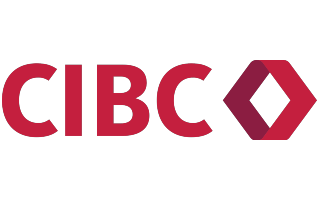Investing in pipeline stocks is a unique opportunity to buy into the profitability of the oil and gas sector. But public opposition to pipeline infrastructure has the potential to interrupt projects and halt construction efforts.
What are pipelines?
Pipelines are the physical structures responsible for transporting natural gas, crude oil, natural gas liquids, petroleum and petrochemicals from production centers to refineries, docks, terminals, power plants and consumers. They are a core component of the oil and gas industry and without their infrastructure, the system would grind to a halt.
Pipelines can be divided into 4 subcategories:
- Gathering. These lines gather products from wells and transport them to processing plants.
- Feeder. These lines transport oil, gas and liquids from storage tanks and processing plants to transmission pipelines.
- Transmission. These large pipelines can span more than three feet wide and are responsible for carrying oil, gas and natural gas liquids across state lines and country borders for processing or storage.
- Distribution. These pipelines are responsible for distributing natural gas to homes and businesses.
Pipeline stocks are stocks from companies that build, operate or maintain energy pipelines.
How do I buy pipeline stocks?
- Choose a stock trading platform. If you’re a beginner, our table below can help you choose.
- Open your account. You’ll need to provide your ID, bank account information and Social Insurance Number (SIN).
- Fund your account. Before you can start trading, you’ll need to fund your account with a bank transfer.
- Search for stocks. Use a stock screener to sort and filter stocks.
- Submit your order. Once you’ve found a security you’d like to buy, indicate how many you’d like to purchase and submit your order.
- Monitor your investments. Log in to your brokerage account to track the performance of your portfolio.
Pipeline stocks
There are many stock options for investors ready to buy into the pipeline category.
- Energy Transfer LP (NYSE: ET)
- TC Energy Corporation (TSX: TRP)
- Kinder Morgan, Inc. (NYSE: KMI)
- The Williams Companies, Inc. (NYSE: WMB)
- MPLX LP (NYSE: MPLX)
- ONEOK, Inc. (NYSE: OKE)
- Plains All American Pipeline, L.P. (NasdaqGS: PAA)
What ETFs track the pipeline category?
These are some of the ETFs that track key players in the pipeline industry:
- Horizons Pipelines & Energy Services Index ETF (TSX: HOG)
- Alerian MLP ETF (NYSEArca: AMLP)
- Energy Select Sector SPDR Fund (NYSEArca: XLE)
- ETRACS Alerian MLP Infrastructure Index ETN (NYSEArca: MLPB)
- Global X MLP & Energy Infrastructure ETF (NYSEArca: MLPX)
- iShares Global Energy ETF (NYSEArca: IXC)
- UBS E-TRACS Alerian MLP Infrastructure ETN (NYSEArca: MLPI)
A beginner’s guide to exchange traded funds (ETFs)
Why invest in pipelines?
The pipeline industry in Canada accounts for around 8% of the country’s gross domestic product. More than 840,000 kilometres of pipeline have been laid out across Canada, and the sector employs between 100,000 and 200,000 people.
The US is home to the largest pipeline network in the world. And that network is poised for growth. From 2019 to 2025, US oil production is projected to grow by 46%. And this growth will require more pipeline infrastructure.
While it’s true that we’ve begun to experience a global shift towards green energy, we’re far from eliminating our reliance on gas and oil. Plus, many pipeline companies pay dividends, making pipeline stocks a practical portfolio addition for buy and hold investors.
Risks of investing in pipeline stocks
The profitability of pipeline companies depends on the price of oil and gas. And oil and gas prices can be unstable.
Pipeline companies get paid based on the amount of gas and oil they move. When the price of these commodities falls, drilling companies cut back their activity, well output declines and less oil and gas flows through pipeline infrastructures.
Another risk for investors to consider before buying into pipeline stocks is the rising opposition to new infrastructure. Investors should be aware of the environmental risk it poses.
Namely, pipeline leaks have the potential to contaminate water supplies. Pipeline protests can sideline construction efforts and delay projects, effectively reducing productivity and decreasing profits for companies and shareholders alike.
Compare trading platforms
Before you can invest in pipeline stocks, you’ll need a brokerage account. Review your options below.
Finder Score for stock trading platforms
To make comparing even easier we came up with the Finder Score. Trading costs, account fees and features across 10+ stock trading platforms and apps are all weighted and scaled to produce a score out of 10. The higher the score the better the platform - simple.
Bottom line
Investors seeking a dividend-paying, long-term investment may find value in pipeline stocks. But profits in this category depend on the price of oil and gas and may be impacted by public opposition.
Before you invest, find the right brokerage account that fits your investment goals.
Frequently asked questions
More on investing

What are the best stocks for beginners with little money to invest?
Want to dive into investing but don’t have much to spend? Take a look at these types of stocks.
Read more…
Meme stocks: What they are and examples of popular stocks
Meme stocks can produce large gains in short periods, but the stocks are volatile.
Read more…
How do ETFs work?
Your guide to how ETFs work and whether this type of investment is right for you.
Read more…
How to read stock charts
Learning how to read stock charts and recognize chart patterns can unlock your success as a trader.
Read more…
What are stocks?
Owning a stock means you own part of a company and can potentially grow your wealth. But there is a risk of loss.
Read more…
How to analyze a stock
Learn how to research stocks and find the right investment opportunities in 4 steps.
Read more…More guides on Finder
-
Full guide to paper trading accounts for 2025
How to choose the best paper trading platform to help you learn the ins and outs of investing.
-
How will tariffs affect the stock market?
Find out how the Trump tariffs will impact the stock market and explore Canadian stocks that may be resilient amidst tariffs.
-
What are the best stocks for beginners with little money to invest?
Want to dive into investing but don’t have much to spend? Take a look at these types of stocks.
-
Trading promos & investment account bonuses for 2025
Enjoy perks like free trades and cash back when you open a stock trading account with these online broker promotions.
-
TD Easy Trade review
Use this self-directed trading app to learn the basics of investing with a streamlined app and a number of free trades annually.
-
Best renewable energy stocks
These are the best renewable energy stocks to buy now in Canada.
-
10 best trading platforms and apps in Canada for 2025
Whether you’re a new or experienced investor, these are the best stock trading platforms and apps in Canada.
-
TD Direct Investing Review
Make quick and easy trades using this reputable online trading platform from TD.
-
RBC Direct Investing review
Here’s what you need to know about the benefits and shortcomings of this Big Bank investment platform.
-
Questrade review
Questrade is a leader among Canadian discount brokerages, but is it right for you? Compare fees, features and alternatives here.




